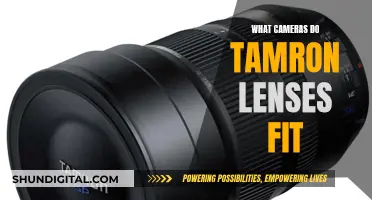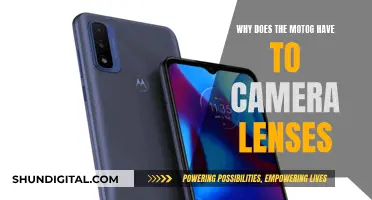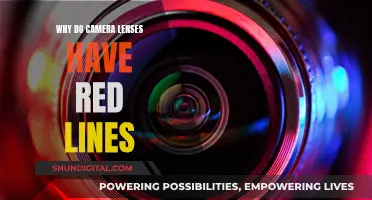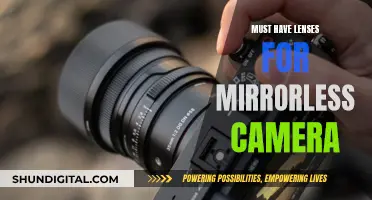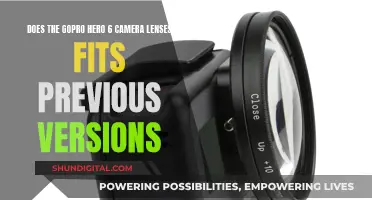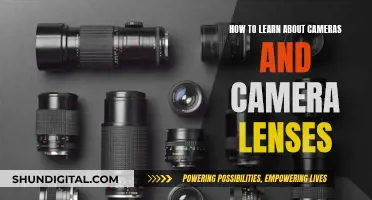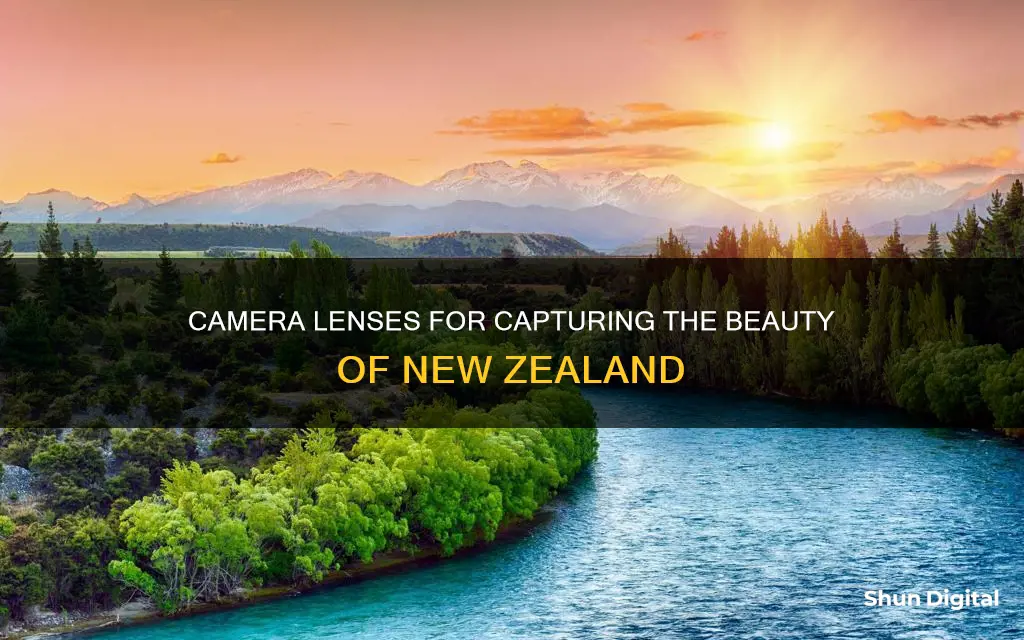
New Zealand is known for its breathtaking landscapes, majestic glaciers, towering mountains, and fjords. It is a photographer's dream, with its stunning natural beauty and unique wildlife.
When it comes to camera lenses for your trip to New Zealand, a wide-angle lens is a must-have for capturing the country's vast and diverse landscapes. A telephoto lens is also useful for photographing wildlife, such as whales and birds. If you plan to do a lot of hiking or other outdoor activities, consider the weight and portability of your gear. A mirrorless camera and a versatile all-in-one zoom lens can be a good choice for travel photography.
Don't forget to pack essential accessories like spare batteries, memory cards, chargers, and a sturdy tripod for those stunning sunrise and sunset shots. A polarizing filter can enhance your landscape shots by reducing reflections and bringing out the colours, while a rain cover will protect your camera in wet weather.
Lastly, if you want to capture the unique perspective of New Zealand's coastal landscapes, consider adding a travel drone to your kit, but be sure to familiarise yourself with the local drone safety regulations.
| Characteristics | Values |
|---|---|
| Camera | Mirrorless, DSLR, Full-Frame, Crop-Sensor |
| Lenses | Wide-angle, Telephoto, Zoom, Macro, Fisheye, Polarising filter, UV filter, ND filter |
| Other Equipment | Tripod, Backpack, Spare batteries, Memory cards, Chargers/powerbanks, Rain cover, Dry bag, Drone, Action cam, Film camera |
What You'll Learn

Wide-angle lenses for landscape photography
Wide-angle lenses are the most closely associated with landscape photography, so much so that many photographers refer to them as ‘landscape lenses’. A lens is considered a wide-angle if the field of view is greater than 65º, which roughly equates to a focal length of 35mm on a full frame. By modern standards, 35mm is a very moderate wide-angle, and many photographers would usually only consider lenses of 28mm or wider to be ‘true’ wide-angles.
Wide-angle lenses are popular with landscape photographers because their extensive field of view makes it possible to capture sweeping vistas. They also have a distinctive look and character, and there is more to them than simply their ability to ‘get a lot in the frame’.
Wide-angle lenses create the potential for exaggerated perspective by allowing you to get very close to a subject. The distance between the subject and background appears to increase; the subject looms large in the frame as everything else stretches out behind it, producing a real sense of drama.
Wide-angle lenses also have an inherently large depth of field, meaning you can keep everything sharp from the immediate foreground through to the horizon. This look is extremely common in landscape photography, which explains why a wide-angle lens is an essential item in a landscape photographer’s kit bag.
When composing wide-angle landscape scenes, think foreground. Wide-angles come into their own when you get in close to foreground interest to create dramatic perspective.
Wide-angle lenses are great for incorporating a vast amount of the landscape into a scene. Our eyes see approximately between 35-50mm field of view in real life, so shooting wider than this gives a sense of how huge a landscape is.
If you're going to be shooting astrophotography, you'll want to incorporate both a foreground as well as a lot of sky. In this case, a lower aperture number is better as it lets in more light in low-light conditions.
- Samyang 12mm f/2.8 ED AS NCS diagonal fish-eye
- Canon EF-S 10-22mm F/3.5-4.5 USM
- Samyang 14mm F/2.8 AF Sony FE
- Sigma 14-24mm F/2.8 DG HSM Art for Nikon
- Canon EF 20mm f/2.8 USM
- Sigma 35mm F/1.4 Art DG HSM
The Magic of Camera Lenses: How They Attach
You may want to see also

Telephoto lenses for wildlife and whale watching
Telephoto lenses are ideal for wildlife and whale watching in New Zealand. They allow you to get close to wildlife without disturbing or endangering the animals. Here are some telephoto lens options to consider:
- Nikkor AF-S 200-500mm f/5.6E ED VR: This lens offers a unique and affordable option for Nikon DSLR shooters, with a relatively long range and a portable design. It has fast and reliable focusing, and an effective VR system that provides a 4.5-stop benefit for handheld shooting. However, it's not weather-sealed and is only compatible with certain Nikon DSLR models.
- Canon RF 100-400mm f/5.6-8 IS USM: Canon RF users can consider this budget-friendly telephoto lens, which delivers sharp images and good value for money. While the maximum aperture is limited, it can be countered by the excellent high-ISO performance of EOS R cameras. The autofocus occasionally misses, but the overall performance justifies the price.
- Canon RF 800mm f/11 IS STM: This is an extremely affordable super-telephoto lens from Canon, offering an impressive reach. It uses diffractive optics technology to achieve a compact and lightweight design. It also features a 4-stop image stabiliser for handheld shooting.
- Sigma 100-400mm f/5-6.3 DG DN OS Contemporary: Sony E-mount and L-mount users can benefit from this reasonably compact telephoto lens, which delivers stunning contrast and sharpness. It has built-in 5-axis optical image stabilisation to compensate for the narrower maximum aperture.
- Canon EF 100-400mm f/4.5-5.6L IS II USM: This is a high-end telephoto zoom lens from Canon, offering excellent sharpness and a useful four-stop stabiliser. It's more expensive but can be a good second-hand option.
- Panasonic Lumix G Vario 100-300mm f/4-5.6 II Power OIS: For Micro Four Thirds users, this lens epitomises the size advantages of the system for telephoto work. It offers a 600mm equivalent range in a compact package, with optical image stabilisation and fast, silent focusing.
- Sigma 150-600mm f/5-6.3 DG OS HSM | S: This is a huge and expensive telephoto lens, but it delivers exceptional sharpness and impressively fast autofocus. It's not too big for handheld use, but a monopod is recommended for extended sessions.
- Sony FE 200-600mm f/5.6-6.3 G OSS: This popular telephoto lens from Sony offers a broad range of focal lengths, making it ideal for various subjects. It delivers a strong optical performance with minimal aberrations and high sharpness, along with effective built-in image stabilisation.
- Tamron 18-400mm f/3.5-6.3 Di II VC HLD: This all-in-one superzoom lens is ideal for hobbyists who want to travel light. It's dust- and splash-resistant, making it suitable for outdoor shooting. While image quality is not on par with premium telephoto lenses, it's better than missing a shot.
- Fujinon XF 100-400mm f/4.5-5.6 R LM OIS WR: Fujifilm X-system users can consider this lightweight and weather-sealed telephoto lens, which provides effective image stabilisation. It offers a 152-609mm equivalent range and can be paired with Fujifilm's 1.4x teleconverter for greater reach.
- Sony FE 100-400mm f/4.5-5.6 GM OSS: This telephoto lens is perfectly matched to Sony's high-speed Alpha 9 and Alpha 9 II full-frame mirrorless cameras. It combines superb image quality with fast and accurate autofocus and highly effective image stabilisation. However, it is the most expensive lens in this list.
- Tamron 50-400mm f/4.5-6.3 Di III VC VXD: Designed for full-frame mirrorless cameras, especially Sony E-mount, this lens offers an 8x optical zoom ratio and a versatile range from 50mm to 400mm. It features rapid and accurate focusing, with impressive sharpness levels, especially at 400mm.
How Camera Lenses Influence Color Perception
You may want to see also

Filters for your lenses
Filters are an essential part of your camera kit when travelling to New Zealand. They serve multiple purposes, from protecting your lenses from damage to improving the look of your photos. Here are some of the filters you should consider:
UV Filters
UV filters are a must-have, not just for travel but for everyday photography. They can live on the front of your lenses, protecting them from scratches and other damage.
Circular Polarisers
Circular polarisers are ideal for landscape photography. They can increase saturation for brighter blue skies and limit reflections on water and similar surfaces.
ND Filters
ND filters limit the amount of light entering your lens, giving you the chance to use slower shutter speeds and increase the blur of moving subjects. If you plan on shooting waterfalls in New Zealand, they are essential.
Protection Filters
A high-quality camera lens is expensive but easy to damage, so a protective filter can be valuable. Protection filters can also reduce flares and ghosting and optimise the output of lenses for digital imaging.
Cleaning Your Camera: Internal Lens Maintenance and Care
You may want to see also

Drones and action cams for unique perspectives
Drones and action cams are perfect for capturing unique perspectives of New Zealand's stunning landscapes and offering a different view of the country's natural beauty.
When it comes to drones, it's important to consider the drone safety regulations and laws of the area in New Zealand that you are staying. Once you've got that covered, a drone will allow you to achieve a bird's-eye view of the country's coastal landscapes.
Action cameras are also a great addition to your kit. They are compact, rugged, and capable of POV-style videos, making them a favourite of travel vloggers. If you're heading to a place like Lake Wanaka and enjoying outdoor activities, an action camera will definitely come in handy.
If you're looking for some recommendations, the GoPro Hero 12 Black is an excellent action camera with the best image stabilization on the market. If you're on a budget, the Akaso Brave 8 Lite is a compact and affordable option that records decent 4K video.
Camera Lenses Lifespan: How Long Can You Expect Them to Last?
You may want to see also

Film cameras for a retro aesthetic
If you're looking to capture the beauty of New Zealand with a retro aesthetic, a film camera is the perfect tool. Film photography is on the rise, and it's a great way to add a touch of variety to your travel photos. Here are some tips and recommendations for choosing the right film camera for your trip:
- Second-hand 35mm SLRs: If you're looking for a classic film camera experience, a second-hand 35mm single-lens reflex (SLR) camera is a great option. These cameras offer versatility and allow you to swap out different lenses depending on your needs. The Nikon F2, for example, features interchangeable viewfinders and is compatible with almost any Nikon lens. The Canon AE-1 is another excellent choice and was one of the first film cameras to simplify photography for beginners.
- Point and Shoot Film Cameras: If you're looking for something more compact and straightforward, consider a point-and-shoot film camera. These cameras are usually smaller and easier to carry around. The Olympus XA2, for instance, is a point-and-shoot camera with fully automatic exposure and zone-focus operation. It's a great option for snapshot artists.
- Rangefinder Cameras: Rangefinder cameras are popular for street photography due to their compact size, wider lens, and quiet shutter. The Leica M6 is a highly coveted rangefinder camera known for its built-in light meter and ability to use wide-angle lenses. However, it comes with a high price tag. For a more affordable option, consider the Olympus Pen series, which offers a unique half-frame format and a portable design.
- Medium Format Cameras: If you're looking for even higher-quality images, medium format cameras use 120mm film, which is larger than the standard 35mm, resulting in more detailed photos and better background blur. The Mamiya 7 II is a highly regarded medium format rangefinder camera known for its quiet shutter and exceptional image quality. However, it is also quite expensive. For a more affordable option, consider the Pentax 67, which offers a wide variety of lenses at a lower price point.
- Instant Cameras: Instant film cameras, such as the Polaroid SX-70, capture the imagination with their unique ability to develop photos instantly. The SX-70 is a classic choice and stands out for its folding design, making it compact and easy to carry.
- Large Format Cameras: For those seeking the ultimate in image quality, large format film cameras use sheets of film (usually 4x5 inches) and can capture extremely high-resolution photos. The Graflex Speed Graphic 4x5 is a classic choice and was once the camera of choice for travelling photographers and paparazzi.
When choosing a film camera, consider your budget, the weight and portability of the camera, and the features that are most important to you. Don't forget to pack enough spare film, as you don't want to run out during your trip!
Smartphone Camera Lenses: Full-Frame Equivalents Explained
You may want to see also
Frequently asked questions
The best camera lenses to bring to New Zealand will depend on the types of photos you want to take. If you're interested in landscape photography, a wide-angle lens is a must. If you're hoping to capture wildlife or whale-watching photos, a telephoto lens is a better option.
Wide-angle lenses are perfect for capturing the beauty of New Zealand's landscapes, from majestic glaciers to towering mountains. They allow you to capture wide shots in close quarters and are a landscape photographer's best friend.
A telephoto lens will give you more reach and is ideal for photographing wildlife or other subjects that are further away. It can also be useful for capturing details in landscapes, such as glacial crevices or rows of grapevines in a vineyard.
Yes, a polarizing filter can help reduce reflections and enhance the colours in your landscape shots. Circular polarisers are particularly useful for landscape photography.
New Zealand has a diverse range of scenery, from stunning coastal landscapes to rugged outdoor adventures. Make sure your lenses are weather-sealed and protected from potential splashes or rain. It's also important to consider the weight of your lenses, especially if you plan to do a lot of hiking or outdoor activities.


